Cornbread In All Its Forms and Glory
Depending on where you’re from, you might conjure a very specific image when thinking about cornbread. Maybe it’s that yummy baked bread fresh out of the oven and cut into squares that your mom or granny used to make. Or maybe it’s that crispy flatbread fried and dipped in chili. The significance of this bread spans history, culture, geography, and environmental considerations. We’re going to dig into all of that, but before we do, let’s explore the different ways you can eat this delicious bread!

Traditional square-cut cornbread
Preparation Methods of Cornbread
Cornbread is a super important food to many cultures all over the world! One of the reasons many people have been drawn to use corn flour is how easy, inexpensive, and quick it is to make. There are particular ways of making it and thus the bread results in a different delicious finished product. Let’s go through the main methods of how cornbread is prepared, so we can appreciate this diverse food!
- Baked
Baking makes the process effortless because the person making it can throw the pan (or skillet) in the oven, set the timer, and more or less forget about it! Even though baking wasn’t the original method of preparation, it’s the way a lot of people are familiar with classic “cornbread” today.
This is the oldest way of doing it and there are a couple of different varieties to this as well. Some people will grill the batter or dough on something like a skillet or even a rock. But more often, it’s fried in animal fat so that it gets a moist inside and crispy exterior.
Boiled can look pretty classic, like little balls of corn dough sitting in a tub of boiling water. But most commonly, it was fried in water, technically making it boiled. It really depended on what people had on hand at the time. This would also be used for things like dumplings.
Is it possible that all things in life exist to be deep-fried? In the case of doughs and batters, the answer is almost certainly yes. These versions of deep-fried bread will be mostly quite small, or in the shape of bite-sized balls. Regardless, they’re best served warm.
Steaming bread gives a really nice soft and moist texture, including the exterior! As opposed to boiling, for instance, steaming reduces the loss of nutrients during the cooking process and makes for a tasty delight.
Cornbread Types Around the World
Now for the main course! There are so many different types of cornbread and some of them can seem quite similar on the surface. Let’s jump into as many as possible and see what makes them so special and unique.
- Fluffy Cornbread, Mısır Ekmeği, and Proja
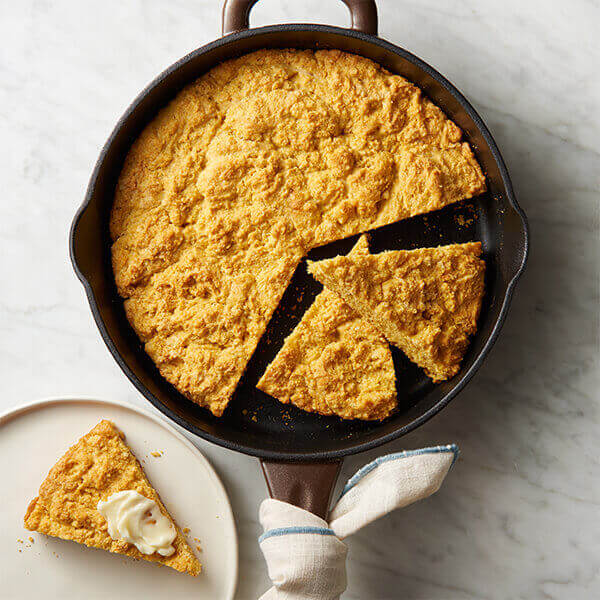
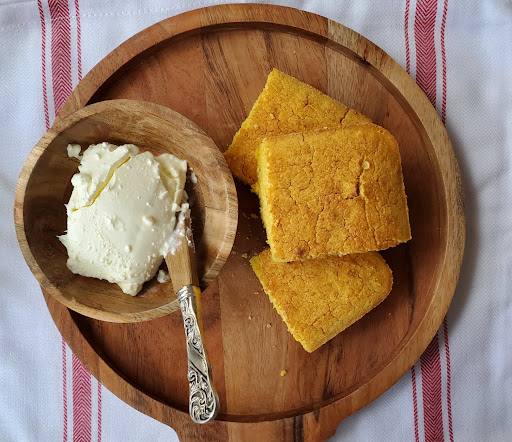
Cornbread baked in a skillet (Land o’ Lakes) and Projara with Kajmak cheese spread (The Balkan Hostess)
This fluffy, almost cakey type is very popular, and is the one on this list that just goes by the common name “cornbread”. An interesting part of the American version (at least Southern North American) is that many people bake them in skillets! It’s really typical to see the cake-like bread come out of the oven in a pan with a handle. Some baked spinoffs of this fluffy version include treats like muffins, crisps, bread puddings, and even cakes (with the icing and everything). Another American type is cracklin’ bread which is essentially the classic cornmeal bread with bits of cracklin’ (fried pieces of porc).
There are many different names and variants for this delicious bread. In Turkey and areas near the Black Sea, for instance, it’s called mısır ekmeği. The translation is pretty straightforward; “misir” means “corn” and “ekmeği” means “bread.” The recipe is similar to the other cakey versions, but it will sometimes be made with yogurt as opposed to milk, which makes it moister. Mısır ekmeği is traditionally made in a circular pan on a stovetop, but can also be baked in an oven. This bread is important to Turkish culture, like many on our list, as an affordable and nourishing meal.
Proja, also known as Srpska proja, is a very simple Serbian food. It’s made with three ingredients – ground corn flour, salt, and water. A more complex version exists called projara where the batter is lavished with ingredients like eggs, milk, and yogurt. Cheese is extremely popular to have in and on projara. Proja and projara are usually made in circular pans, though people will make square or muffin versions of them as well. They are usually a side for savoury meals, and can be quite a dry dish, so serving with sauces, yogurt, butter, or, of course, cheese is a must.
- Corn Pone and Hot Water Style
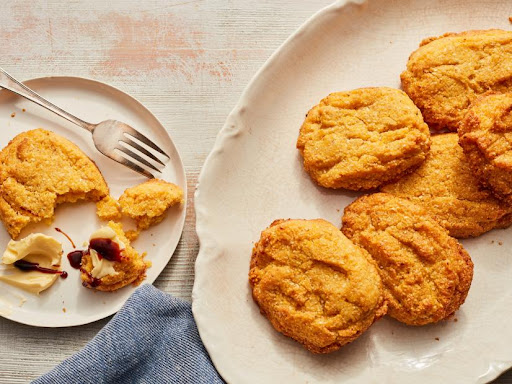
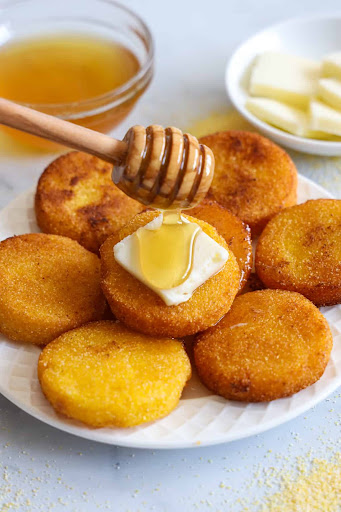
Corn Pone (Food Network) vs Hot water (Simply Home Cooked)
Indigenous People in the Americas have been using corn to make bread for centuries and each Indigenous language has a distinct word for it. “Corn pone” is the term for the cornbread Indigenous Peoples shared with English settlers during North American colonization in the 16th century. The word “pone” is English, but it comes from North American Indigenous words for “baked.” Modern day corn pone is crispier than most breads on this list, denser, and in a bite-sized format.
Hot water cornbread is a little confusing to explain, but it’s one of the simplest recipes. There are traditionally only three ingredients: cornmeal, baking powder, and boiling water. Sometimes chefs will make variants of the classic three ingredients, but it has a similar size and consistency to corn pone. However, one of the big differences, as the name suggests, is that the batter is made with boiling water for a moist batter and resulting bread. It’s also possible the original purpose of adding boiling water was to allow for the taste of the cornmeal to bloom a bit before frying. Like many varieties on this list, they are fried so even with the moistness, they have a nice crispy exterior.
- Hoecakes and Johnny Cakes
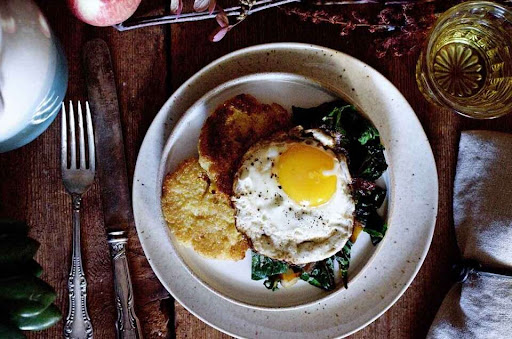
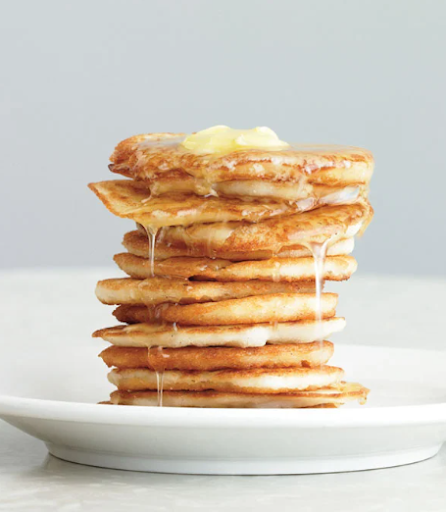
Hoecakes (King Arthur Baking) and Johnny Cakes (Liete’s Culinaria)
Some people use the names “Johnny Cakes” and “hoecakes” interchangeably, but they are distinct! Hoecakes are named after the “hoe” griddle pan, which is a skillet without sides. The significant history of hoecakes lies in their importance as survival food for many enslaved Black People in the 18th and 19th centuries. This recipe was adapted from the Indigenous ways of frying corn batter. Although some people insist that these cakes were actually fried on hoe blades as opposed to hoe griddles, it’s unclear whether or not this is a fact. Hoecakes remained a beloved bread for many people and became a symbol of resilience, survival, and pride in Black communities. You can find many iterations of hoecakes including savoury or even served on their own with maple syrup.
The Narragansett Peoples of Aquidnic (or Rhode Island) have been making the recipe for Johnny Cakes which they called “nokechick”. They are the reason why these cakes became such an important part of New England and Rhode Island culture! History has lost where the name Johnny Cake comes from. Some think it comes from the phrase “Journey Cake” because the ingredients were easy to travel with. Another big theory is that the name came from the word “Jonakin,” which came from the word “jannock,” meaning straightforward. It really is a straightforward recipe! Johnny cakes are essentially fried corn batter pancakes. They look like pancakes and are distinct from hoecakes in that they sometimes have a leavener (raising agent) in them. In other versions, they will get baked as opposed to fried.
- Hush Puppies, Sorullos, and Festivals
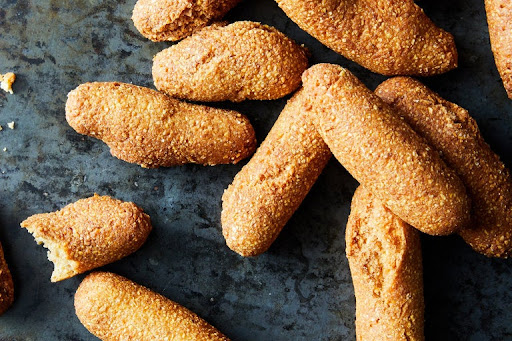

Festivals from Jamaica (NYT Cooking) and Hush Puppies
Hush Puppies are essentially small balls of cornmeal batter that get deep-fried and accompany as a side dish to other foods, such as fish. The name again is a bit of a mystery. Many speculate that because of their size, they were tossed to agitated dogs in an effort to “hush” them.
Sorullos from Puerto Rico are sausage-shaped, but they are another type of deep-fried bread balls similar to Hush Puppies. Like the rest of North America, the Indigenous People of Puerto Rico (the Taino) cultivated corn and made bread centuries before colonization. Sorullos are sometimes served sweet, with chocolate toppings for instance, but they can also be stuffed with cheese and enjoyed as a savoury appetizer or side dish.
Festivals are similar to both Hush Puppies and Sorullos but they originated in Jamaica. They have many different affectionate names, but festival is the main one. Their typical shape is usually an elongated ball. Although they are a bit sweet, they are often served with jerk-seasoned main courses.
- Wotou and Maelie
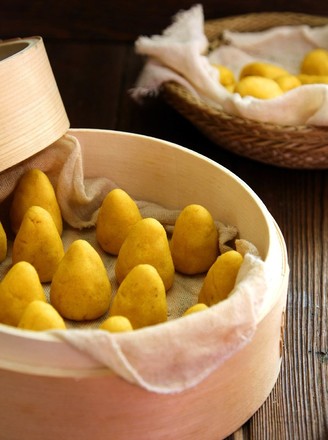
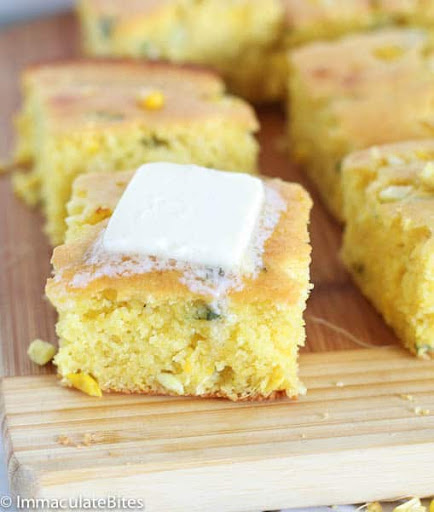
Little wotou ready to be enjoyed (Simple Chinese Food) and scrumptious Maelie (African Bites)
These two may look pretty different, but they have more in common than meets the eye! The main similarity of wotou and maelie? They’re both steamed!
Wotou is a steamed cornmeal bread from Northern China. It’s in the shape of a hollow nest and “wotou” even translates to “nest thing.” Corn is an important crop in Chinese culture even though it isn’t indigenous to the lands. In the early 1900s, it transitioned from an affordable food of the people into Imperial kitchens. Empress Dowager Cixi, who controlled the Chinese government for 47 years, fell in love with the bread when she was in hiding from the Battle of Peking. Her chefs made it for her in the years following the battle and it only grew in popularity.
Maelie is a South African cornbread that is quite unique on our list because its corn content is not in the form of flour… it’s sweet corn! And actually, the original form of this bread didn’t have flour at all; it was more of a pudding. Nowadays, maelie bakers have added flour so it’s become the delicious, moist bread we know and love. Some people are adamant that the corn pieces need to be completely smooth and not noticeable. While others love the presence of corn chunks. If you don’t know which side of the debate you’re on, we suppose you’ll have to try maelie yourself and decide!
- Polenta and Mămăligă
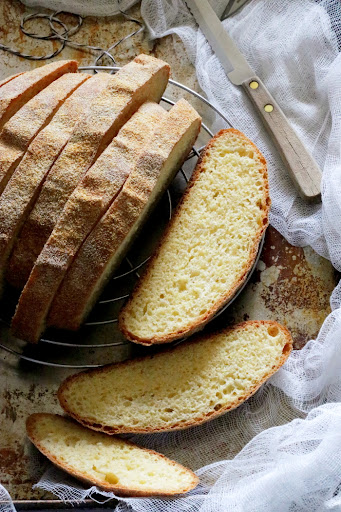
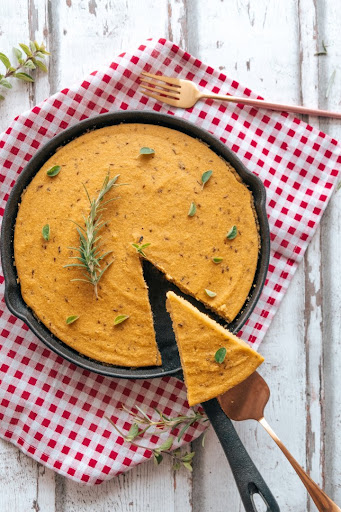
Polenta ricotta bread (Marisa’s Italian Kitchen) and some savoury mămăligă (Yuzu Bakes)
Polenta and mămăligă are another duo whose names are often switched. And frankly, they do share an interesting and unique aspect. Both polenta and mămăligă are made as porridges and also as breads!
Polenta can be made into bread quite simply if it is cooled and allowed to harden. But to get a warm, crispy exterior, people will adapt the recipe a bit and bake it (similar to the Portuguese Broa de milho corn bread). Nowadays, polenta bread is usually made out of corn flour, but it can also be made of rye, spelt, millet, and buckwheat. It’s one of the oldest dishes to have been recorded in history, dating back to the Sumerians in Mesopotamia (modern-day Iraq and Kuwait). Once the joys of corn were shared in Europe through colonization, the corn started growing in Italy. This is where the popular Italian polenta came from.
Mămăligă has always been considered a “peasant” food and today has become treasured in Eastern European culture. Corn is a huge crop in Eastern Europe and is one of the world’s top producers of it. Romania, Moldova, and West Ukraine have mămăligă and corn weaved thickly into their culture. A popular way of serving it is with sour cream and/or cheese. It can also be served as a side to heartier meals with meat, fish, or porc.
- Jamaican and Hopi Cornmeal Dumplings
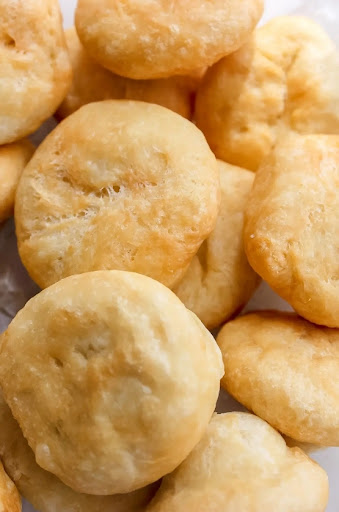
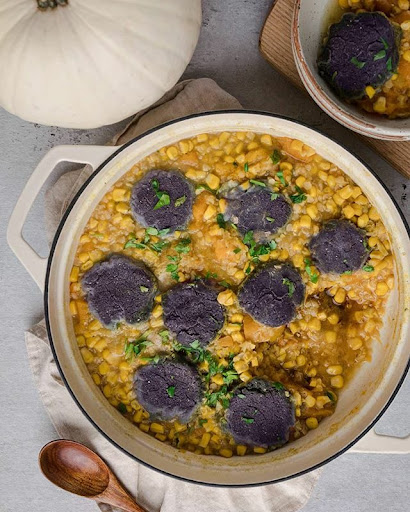
Jamaican dumplings (The Seasoned Skillet) and blue Hopi dumplings in a stew (East Meets Kitchen)
Here we have two dumpling-style cornmeal breads! Jamaican dumplings hold a lot of similarities to deep-fried festivals, but they are boiled instead. Both festivals and these dumplings are descendants of Johnny cakes and the Indigenous ways of cooking bread made of corn. You can enjoy them with soup or stew, but a lot of the time, they will actually be enjoyed for breakfast with ackee (Jamaican national fruit) and saltfish (salted codfish), callaloo (traditional leafy Caribbean dish), or kidney.
Hopi Dumplings can come in different colours, which is pretty unique in the cornmeal world. The Hopi are native to Hopitutskwa in Arizona and corn is central to their culture, agriculture, and even clothing. They have a phrase in their language “Um hapi qaa’oniwti” that loosely means “people are corn.” It refers to the life cycle of humans mimicking that of the cycle of corn. They use a type of corn called “Hopi maize” that is blue and thus the dumplings are blue! The Hopi also make another corn flatbread called piki that is more similar to tortillas.
- Tortillas and Makki Ki Roti
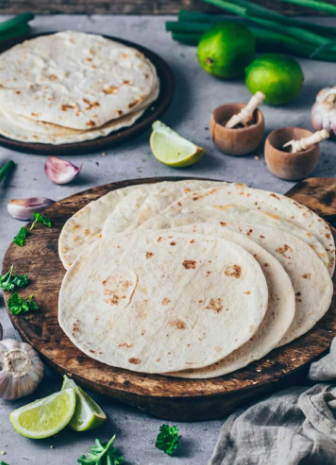
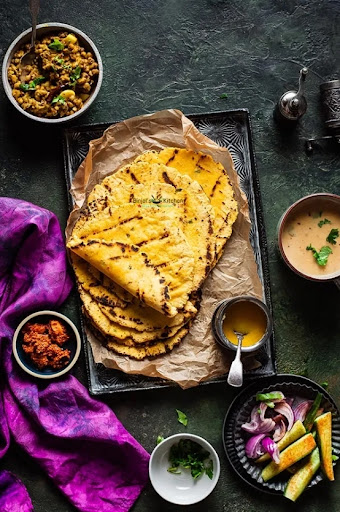
Beautiful homemade tortilla by Bianca Zapatka and stunning Makki di Roti from Binjal’s Veg Kitchen
While Tortillas can be wheat-based nowadays, traditionally are cornmeal-based flatbreads! They were made using a process called “nixtamalization.” This is the act of soaking corn kernels in alkaline water (such as limewater) so it’s easier to remove their skins and grind them into cornmeal. The first recorded account of tortillas was from around the 1500s, which is when they received their current name meaning “little cake” in Spanish. But the original name given to it by the Aztec and other Nahuatl speakers was “tlaxcalli.” Contradicting written history, tortillas are suspected to have been made as far back as people have been cultivating corn.
Makki ki roti is a north Indian flatbread that shares a lot of similarities with tortillas but has a distinctive yellow colour. The colour does come from the corn, but also a spice usually in the bread called ajwain. People will use different spices in makki ki rot, but ajwain (which is similar in taste to thyme) is a prominent one. The flour in makki ki roti is a bit different from cornmeal, it’s powdery cornstarch so it’s much lighter. In India, corn is the third most important crop after rice and wheat. It’s used for food security as well as agricultural feed and the economy. Makki ki roti is cooked in a tandoor (cylindrical oven) or on a tawa (flat skillet).
- Arepas, Pupusas, and Mchadi

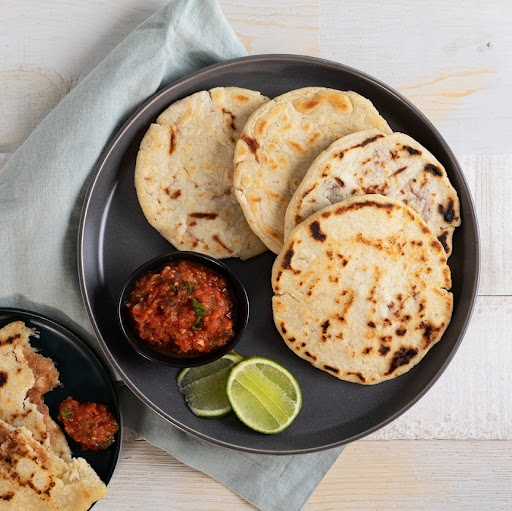
Warm and cheesy arepas (The Recipe Critic) and Pupusas with a side of salsa (Ready Set Eat)
Arepas are another pre-Colombian corn-based flatbread that comes from South America. They’re fried, just like tortillas, but end up being a bit thicker. Although the different region’s versions of arepas are similar and share the same name, each country has its own distinct love for arepas. In Venezuela, arepas represent pre-Colombia Venezuelan gastronomy; it’s a sign of autonomy and tradition. You can find arepas pretty much anywhere for any part of a meal, including the centerpiece. Colombia also holds arepas as a cultural cornerstone. You can get a huge variety of arepas sold in restaurants, grocery stores, and by street vendors. Puerto Rico also has their version of arepas that uses coconut milk! They’ll usually stuff the bread with various types of meat and fillings like a sandwich.
Pupusas are quite similar to arepas, but are from El Salvador and Honduras. The Nahua, who are the Indigenous Peoples of El Salvador, created these breads about 10,000 years ago. They are truly an ancient recipe and the national dish of El Salvador. There’s even a day on the second Sunday of November to celebrate it! Pupusas are mostly enjoyed stuffed with a variety of delicious things. Curtido (which is a pickled cabbage relish) and tomato sauce are definitely a super popular combo. You can also get it with beans, cheese, other vegetables, and more recently with meat.
Mchadi looks very similar to our two other patties here but is from the country of Georgia. You can fry mchadi or bake it, but it’s served very similarly to the other two with cheese inside or lobio. Lobio is a traditional Georgian dish that you can get either hot or cold. It’s savoury and usually contains garlic, onions, coriander, and walnuts. Mchadi has been described as “a dry thing you eat with something wet.” It’s a generic term, and you can get different kinds.
Cornbread as Resilience Symbolism
Although many of the corn-based breads we’ve explored today are made from simple and mostly inexpensive ingredients, the culture around them is rich and diverse. There are many communities that relied on corn and affordable nourishment to survive and they adapted recipes to fit their needs. Many of these recipes have become deeply associated with Soul Food over the years. “Soul” is a term that became popular in the Jazz scene in the 1950’s. It was first used by Black communities to describe and reclaim a music genre that had been appropriated by popular music. It evolved into defining all sorts of Black cultural and artistic celebrations, including food.

Cornbread has been adapted to many forms, including chili casserole! (Food Network)
Soul food originated in the Southern United States during the Antebellum slavery era. It was a mixture of rationed ingredients with West African and Indigenous ways of preparing them. The meals had to be high calorie and very nourishing, so there were many fried foods, cornmeal-breaded meats, and corn-based breads. These types of foods became symbols of independence and reminders of home, family, and comfort. They are enjoyed today as such, as well as an important part of the Black American Identity. Soul food has adapted through the years finding ways to fill modern needs. Ways to foster less calorie and animal fat intake have been adopted, and even vegetarian and vegan options are coming out!
Origin of Corn
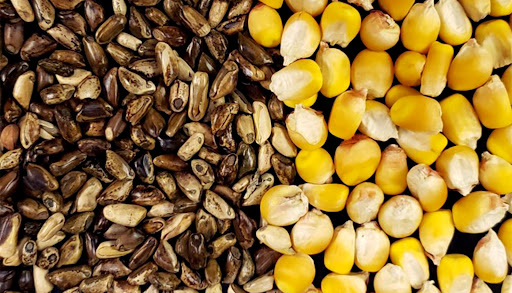
Teosinte vs Maize kernels look very different (photo by Ken Wang Futurity)
The corn ingredient that is used to make these staple breads of today would not exist without human cultivation… and maybe a dash of climate change. Smithsonian Scientists actually attempted to mimic the conditions corn would’ve faced 10,000 years ago to see what it would look like. Those strong cobs filled with juicy kernels originally looked like more of a grass (called teosinte) than those impressive stocks we know today.
The people who originally cultivated the corn crop were the Aztec, Incan, and Mayan People of Mesoamerican. It was central in their society, and they even worshipped it with ceremony and sacrifice. One of their Gods, Centeotl, was known as the Maize God and was a prominent figure; he was even the son of the Sun and Earth Gods. We talk more about the origins of corn in relation to popcorn in our Popcorn Flavours blog if you’d like to learn more about it in that regard. Making bread from corn was something the Aztec People were doing almost immediately once they realised the benefit of the plant.
Corn is also one of the Three Sisters agricultural crops (i.e., winter squash, maize [corn], and climbing beans). The Three Sisters hold significance in many different Indigenous creation stories, like the Haudenosaunee Peoples’ origin of Turtle Island (one of the original names for North America). All three are very nourishing, and planting them together maintains soil fertility and supports each plant’s individual growth in a harmonious life cycle. Corn migrated around the world mostly through colonization and exploration, and is now grown on every continent except Antarctica!
How Else Can Corn be Useful?
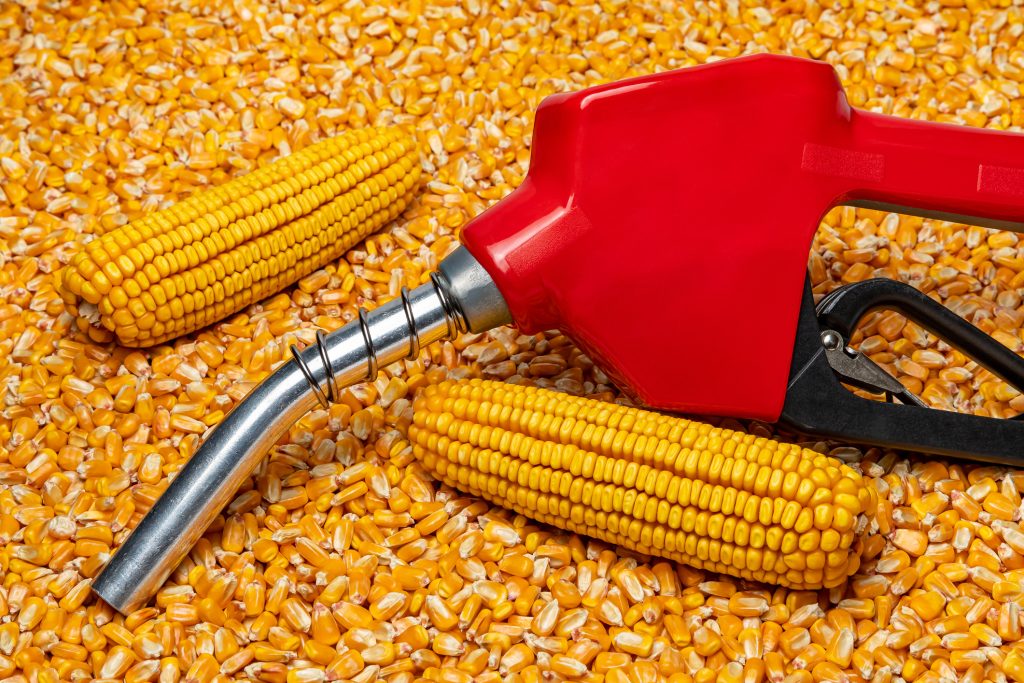
With all of the cultural and economic implications of corn throughout history, it’s no surprise that this low-cost crop infiltrated markets other than food. How is corn being used in sustainability initiatives and what else can it be used for?
Polylactic acid (PLA) is an alternative to petroleum-based plastic and is created through fermented corn starch and other plants. Companies are switching to PLA plastics because they’re made with carbon-absorbing plants and are both biodegradable and, technically, carbon neutral. Corn-based plastic may become the next big thing in initiatives toward a green transition, but it might sound too good to be true. Even though PLA can biodegrade, it takes on average, between 100 to 1,000 years to dissolve in a landfill. Also like we went over more in-depth in our Ice Cream Cones blog, when it comes to recycling opportunities, PLA falls in the number 7 category (Others). This means that it needs to be separated from regular plastic so it can be sent to industrial composting facilities that are able to “recycle” PLA. Until we establish proper disposal and reprocessing systems, PLA truly isn’t any better than using regular plastic.
Although the majority of the world seems to still run on fossil fuels, there’s a corn energy alternative that supplements this. Corn-based ethanol creates less greenhouse gas emissions and is biodegradable, which is a huge step up from fossil fuels. However, as global food shortages and insecurity continue to rise, the big dilemma is whether we should be conserving corn for feeding people as opposed to using it to fuel things. Another important aspect of using biofuel is to assess the impact on the atmosphere, on water quality, and look at corn’s societal value both as food and fuel. Recent research indicates that corn is better as food than a biofuel. And like many parts of life, the answer is not cut and dry.

Homemade southern style cornbread in an iron skillet
Cornbread is one of those things that might seem pretty simple at first glance. But there’s a whole world underneath that delicious yellow exterior. Why not try some again or for the first time with this fresh perspective?




